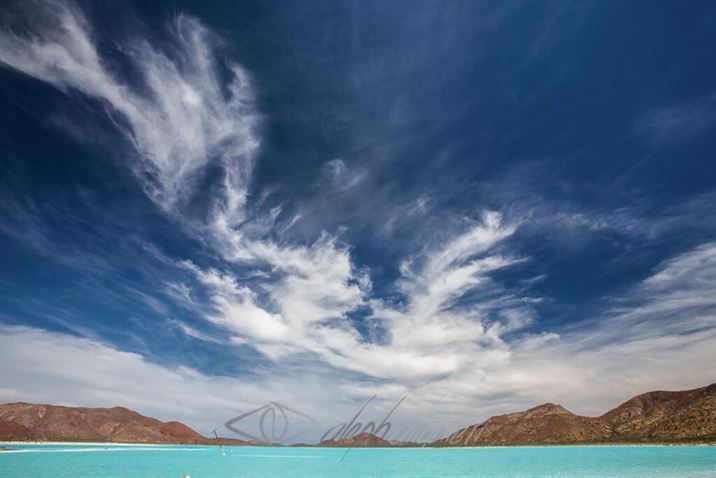[dropcap color=”#5CB4B5″]I[/dropcap]sla del Carmen is located in the Sea of Cortez, about nine miles east of Loreto, seven miles southeast of Coronado Island and four from the coast of the peninsula. Like Coronado, the island is part of the municipality of Loreto. Nature has favored Loreto with exceptional geographical features of contrasting landscapes of mountain, desert and sea.
Today, the island is home to a private business and a protected area for the conservation of wildlife. Guards and guides are the sole inhabitants.
The island’s elongated shape is about 37,000 acres in length, occupies approximately 58 square miles and contains a mountain range that rises to 1,600 feet above sea level. The complete privacy and freedom found on Carmen allows close contact with nature.
The history of Isla del Carmen basically revolves around a salt deposit located at the north end of the island in an area called Bahia Salinas. The salt saga began in 1698 when the Jesuits arrived to establish the mission of Loreto. The missionaries discovered the area by accident [1] and began stocking up on salt for themselves, as well as future Jesuit missions as they were established. It remained so for many years until 1875 when the Viosca brothers from La Paz took control of the salt. They built a railroad track of about 2,000 feet where a steam locomotive moved the salt to a small pier.
[two_first]Eventually, the control of this resource came under the Santa Fe Railroad and then the Pacific Salt Co. Limited of London. The latter improved extraction methods and renewed the railway equipment. Around 1945, the company began operating under the name Pacific Salinas, SA and obtained a permit allowing 99 years of extraction. According to Andrew Davis, most members of the company were Spanish, including, as he recalls, Cayetano Blanco Vigil and Alonso Florida. This group, in turn, owned several salt mines, as remembered by General Manager Ricardo Sanchez. Subsequently, the salt became part of the of the Monterrey Cellulose and Derivatives S.A de C.V Conglomorate (CYDSA) which extracted the salt of Isla del Carmen until 1983.
[/two_first][two_second]
The salt plant closed in 1984, but what remains provides an idea of what the island once looked like. It is possible to see the dwellings for the saltmine staff, the school, cemetery, sports fields, workshops, warehouses, fuel and oil tanks, and a bank. Inside the ruins of this last one some files, typewriters and a safe wich content is said “to be ignored” are preserved.
There is also is the Chapel of Our Lady of Carmen in perfect condition, with a beautiful image of the Virgin on the altar. The wives of the business owners are very attentive to the preservation of the chapel.
There are also four well-maintained and comfortable houses, two used by the current business owners when they come to the island, and also to accommodate hunters. The other two are for the guards, who in turn are in charge of maintaining the houses and chapel in good order.

It has been said that Isla del Carmen was abandoned after the saltmine of Guerrero Negro opened. The production was much higher and its location in the Pacific Ocean was a major savings in distance and transportation costs for customers. Reaching Isla del Carmen required going around the State of Baja California Sur from the Pacifc Ocean. Japan is the main customer of Mexican salt and the Japanese found it more convenient to buy salt from Guerrero Negro.
Today, the customers are also shareholders. The Mitsubishi Corp. currently owns 49 percent of the shares of the mining company. The Mexican federal government owns 51 percent.
The reality is that with the success of Guerrero Negro, the Pacific Salt Company of Isla del Carmen just stopped operating.







